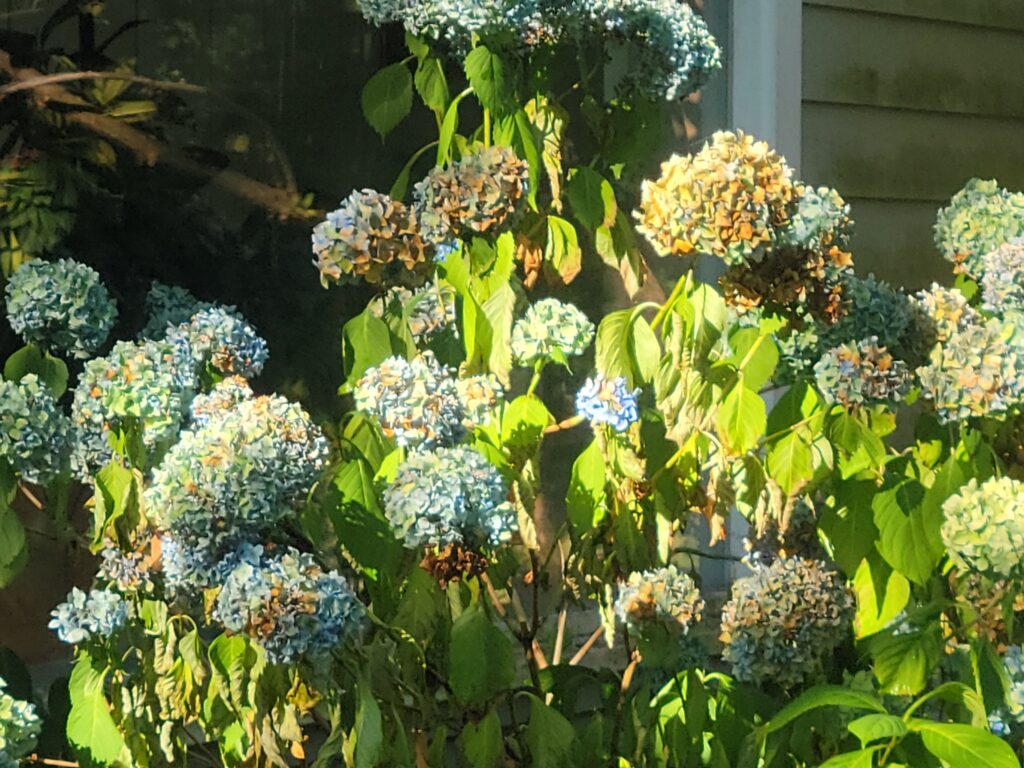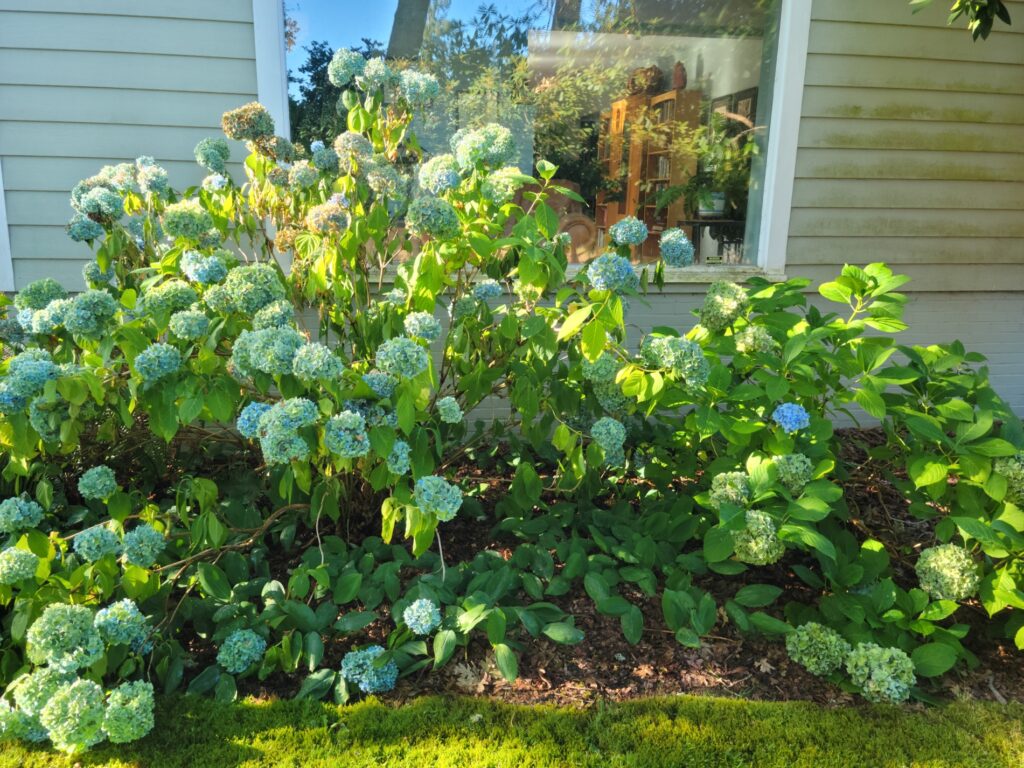
This past week I was out of town at a conference, and since the week was supposed to be a scorcher I made sure my husband was going to water the container plants daily. And indeed, temperatures were in the 90s, dropping to the mid-60s at night. But the container plants looked great when I got home and I didn’t think much more about it until the next day. My husband called me into the living room, pointing at our massive mophead hydrangea which looked like it had been torched. Leaves and blossoms were wilted and browning. Every single stem was affected. Since our landscape is on an automated sprinkler system, what the heck happened?
This is when caution and objectivity are important. I wasn’t going to go cut the whole thing down, even though it looked terrible. Instead, I made observations of the site (not just the plant):
- The site is on the north side of the house, where plant only receive direct sunlight in the morning and late afternoon during the summer.
- No other plants were affected – not even the smaller hydrangea to the west of the damaged plant.
- The irrigation system had been working normally.

When diagnosing plant problems, it’s also important to consider the history of the plant and the landscape:
- Hydrangea is at least 55 years old.
- No soil disruption or other site disturbance
- No pesticide or fertilizer use
- Mulched with arborist wood chips

Given that no other plants were affected, the problem was with the hydrangea itself. Hydrangeas use a lot of water to support their large, thin leaves and massive flower heads. When the weather suddenly turned hotter and temperatures stayed abnormally high in the evenings, the plant could not recover its water loss overnight. Many flowers and leaves experienced terminal wilt – that means they lost too much water and tissues turned brown. Other flowers and leaves were able to recover as day and night temperatures returned to normal.

What could we have done to prevent this? Had we seen the wilt occurring during the day, we could have turned on the sprinklers manually in that part of the landscape. Hydrangeas are a good indicator of low soil water. In future summers, as we continue to experience hotter and drier conditions, we will keep an eye on our hydrangea and use additional irrigation if necessary.
Can you say more about your automated irrigation/sprinkler system? Is it a drip irrigation system or is the water dispersed above ground. I have been thinking about a drip irrigation system for my irregular ornamental beds and have been reading about them, but haven’t brought myself to actually do it. I suppose I am afraid of failing at it. Or if you can point to a linked article about the subject, I’d be glad to read one. Thank you. And I hope your hydrangea recovers, poor thing!
An automatic system can be helpful but don’t completely rely on it. The system, controller, and emitters have to be checked at least twice during the growing season, the beginning and then mid-season. Power failures can make the controller go into default mode so always check it after a power cut.
Most shrubs need more than one emitter per plant so plan accordingly. Depending on your climate, soil, and the plants you’re growing micro-sprayers may be a better choice than drip emitters.
Check with your local Cooperative Extension Service office for info on using automatic irrigation in your area.
Good article.
For diagnosis I think it would be pertinent to know what sort of automatic watering system it was and the type of water delivery method (drip, mini sprinklers, soaker hose….). Then, know if the system was working on the wilted plant.
Checking the base of the plant for girdling might have been useful, too.
Lots of options to consider.